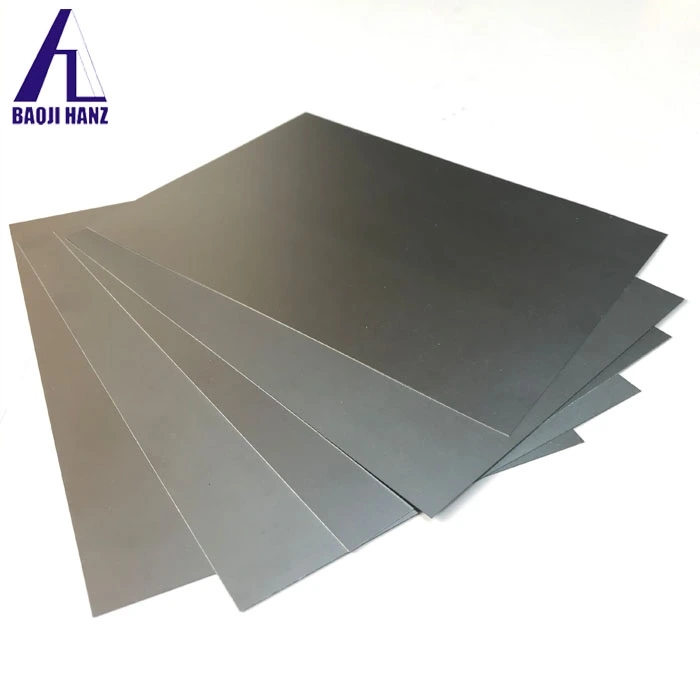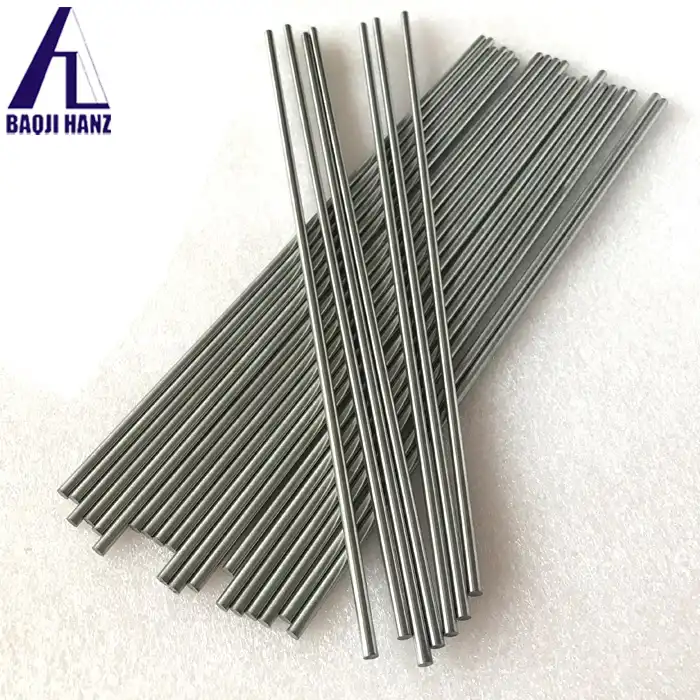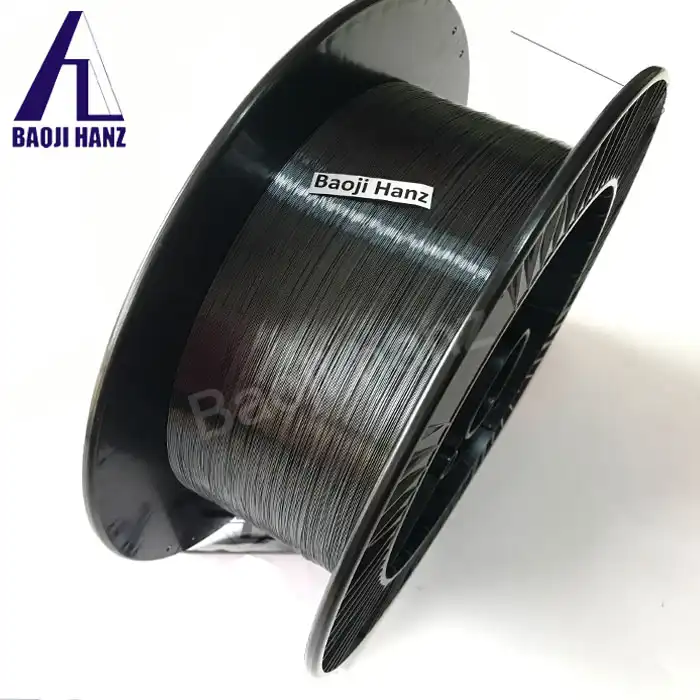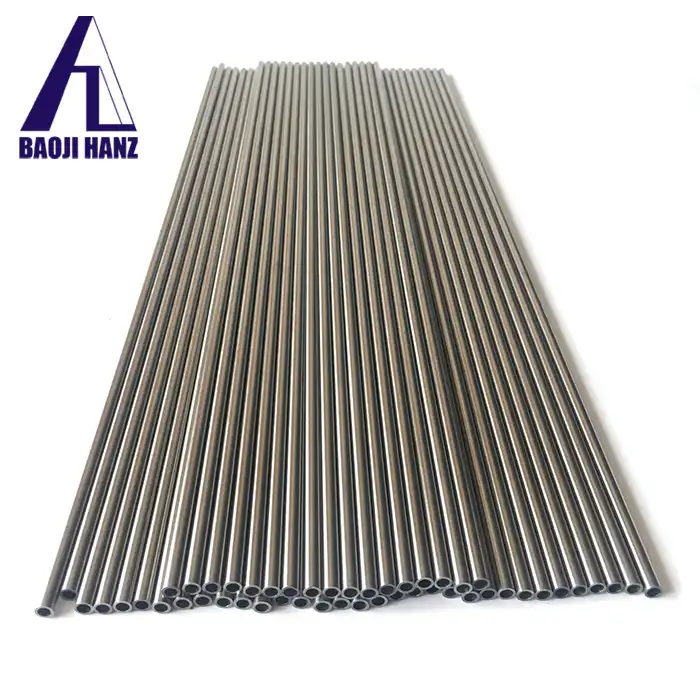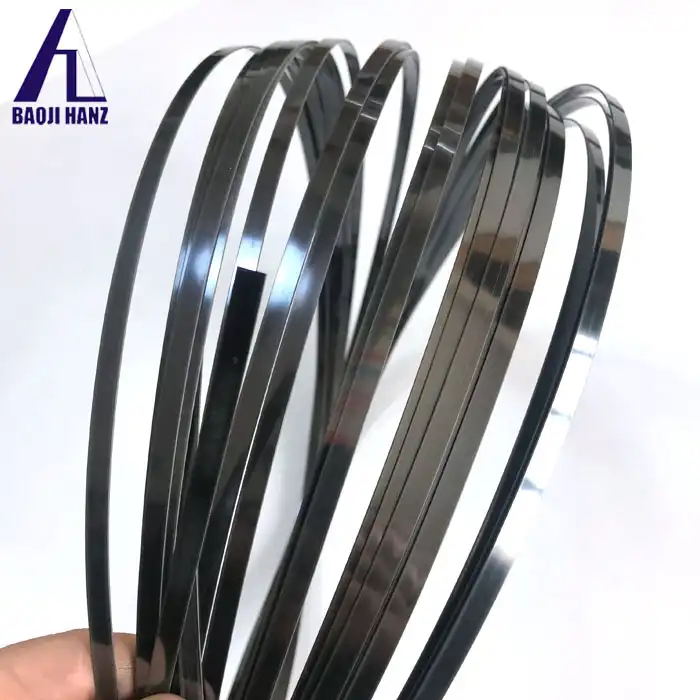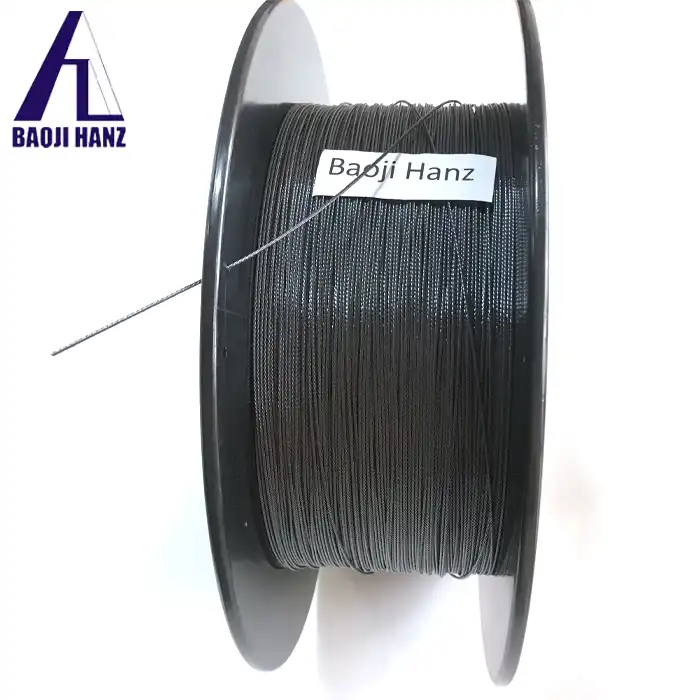How Can Superelastic NiTi01 Memory Tube Revolutionize Your Medical Devices?
2025-04-02 11:55:38
Superelastic NiTi01 memory tube represents a groundbreaking advancement in medical device engineering, offering unprecedented potential to transform healthcare innovation. This remarkable nickel-titanium alloy combines superior flexibility, durability, and biocompatibility to address longstanding challenges in medical device design. With its exceptional shape memory properties and ability to withstand repeated deformation without compromising structural integrity, Superelastic NiTi01 memory tube is empowering medical device manufacturers to create smaller, more effective, and less invasive solutions. From cardiovascular stents to neurological interventions and orthopedic applications, this revolutionary material is setting new standards for device performance and patient outcomes.
Transformative Properties of Superelastic NiTi01 Memory Tube in Medical Applications
Unparalleled Mechanical Characteristics
The Superelastic NiTi01 memory tube exhibits extraordinary mechanical properties that make it uniquely suitable for medical device applications. Its exceptional elasticity allows it to recover its original shape even after significant deformation, providing a level of resilience unmatched by conventional materials. This superelasticity stems from the unique crystalline structure of the nickel-titanium alloy, which undergoes a stress-induced martensitic transformation when deformed and returns to its austenitic phase upon release. The ASTM F2633-07 certified material can withstand repeated cycles of deformation without fatigue failure, a critical feature for devices that must function reliably within the dynamic environment of the human body. Available in outer diameters ranging from 3mm to 114mm and lengths up to 6000mm, the Superelastic NiTi01 memory tube can be precisely tailored to meet specific medical device requirements. This adaptability allows for innovative designs that would be impossible with less versatile materials. The combination of flexibility and strength creates opportunities for devices that can navigate tortuous anatomical pathways while maintaining the structural integrity necessary for effective treatment, revolutionizing minimally invasive procedures across medical specialties.
Superior Biocompatibility and Corrosion Resistance
When developing medical devices intended for implantation or prolonged contact with bodily tissues, biocompatibility and corrosion resistance are paramount considerations. The Superelastic NiTi01 memory tube excels in both aspects, providing a safe and durable solution for critical medical applications. With certification to ISO13485:2016 and EU CE standards, this material has undergone rigorous testing to confirm its suitability for medical use. The inherent corrosion resistance of the nickel-titanium alloy protects against degradation in the aggressive biochemical environment of the human body, ensuring long-term stability and functionality. This property is particularly valuable for permanent or semi-permanent implants, where material breakdown could lead to device failure or adverse patient reactions. Additionally, the biocompatible nature of Superelastic NiTi01 memory tube minimizes inflammatory responses and tissue irritation, allowing for better integration with surrounding tissues and reduced complications. The material maintains its superelastic properties over an extensive temperature range, making it functional under various physiological conditions. For medical device manufacturers, these characteristics translate to improved product longevity, enhanced patient safety, and reduced risk of device-related complications, ultimately revolutionizing the reliability and performance of medical devices across various therapeutic areas.
Customization Capabilities for Specialized Medical Requirements
The versatility of Superelastic NiTi01 memory tube extends beyond its inherent material properties to include extensive customization options that address the diverse needs of medical device manufacturers. Baoji Hanz Metal Material Co., Ltd. offers sophisticated processing services including bending, welding, decoiling, cutting, and punching, enabling the creation of highly specialized components tailored to specific medical applications. This adaptability is critical in an industry where device dimensions and configurations are often dictated by unique anatomical constraints or therapeutic objectives. With wall thickness options ranging from 0.1mm to 15mm, medical device designers can optimize the balance between flexibility and structural support based on the intended application. The availability of OEM services further enhances the material's applicability across different medical specialties, allowing for customized alloy compositions, specialized surface treatments, or unique geometrical configurations. This level of customization empowers medical device companies to pioneer innovative solutions for previously challenging clinical scenarios. For instance, neurovascular interventions require exceptionally fine and flexible materials that can navigate delicate cerebral vasculature, while orthopedic applications may demand greater rigidity and load-bearing capacity. The Superelastic NiTi01 memory tube's adaptability across these varying requirements eliminates the need for compromises in device design, revolutionizing the approach to medical device development and enabling truly application-specific solutions that optimize therapeutic outcomes.
Clinical Applications Driving Innovation with Superelastic NiTi01 Memory Tube
Cardiovascular Breakthroughs and Interventional Cardiology
The field of interventional cardiology has been dramatically transformed by the integration of Superelastic NiTi01 memory tube technology, particularly in the development of advanced stents and catheter-based delivery systems. The material's unique combination of flexibility and strength addresses fundamental challenges in cardiovascular interventions, where navigating tortuous vasculature and maintaining vessel patency are critical requirements. Self-expanding nitinol stents manufactured from Superelastic NiTi01 memory tube offer significant advantages over traditional stainless steel alternatives, including better conformability to vessel geometry and reduced risk of recoil. These stents can be compressed into low-profile delivery systems and automatically expand to their predetermined shape upon deployment, minimizing trauma to vessel walls and improving long-term outcomes. With outer diameters available from 3mm to 114mm, manufacturers can create stents for everything from small coronary vessels to larger peripheral arteries. The material's thermal stability ensures consistent performance within the body's temperature range, while its corrosion resistance provides durability in the challenging cardiovascular environment. Beyond stents, Superelastic NiTi01 memory tube is revolutionizing guidewires, embolic protection devices, and transcatheter heart valves. The precision manufacturing capabilities offered by Baoji Hanz Metal Material Co., Ltd. ensure consistent wall thickness (0.1mm~15mm) and material properties across production batches, addressing the stringent quality requirements of cardiovascular devices. This reliability, combined with the material's exceptional fatigue resistance, is enabling longer-lasting cardiovascular implants that significantly improve patient quality of life while reducing the need for repeat interventions.
Neurological Interventions and Enhanced Patient Outcomes
The delicate and complex nature of neurological anatomy presents unique challenges for medical device design, challenges that Superelastic NiTi01 memory tube is uniquely positioned to address. Neurovascular interventions, including the treatment of aneurysms, stroke, and arteriovenous malformations, require exceptionally fine, flexible, yet durable materials that can access remote areas of the brain while minimizing trauma to surrounding tissues. Superelastic NiTi01 memory tube, with its customizable dimensions and extraordinary flexibility-to-strength ratio, has enabled the development of revolutionary devices like flow diverters, embolization coils, and retrievable stent retrievers. These devices leverage the material's superelastic properties to navigate the tortuous cerebral vasculature without permanently deforming or kinking, which could compromise device function or patient safety. The material's ability to return to its pre-programmed shape after being constrained within a delivery catheter is particularly valuable in neurological applications, where precise deployment is essential for therapeutic success. Devices manufactured with Superelastic NiTi01 memory tube undergo rigorous quality control and testing to ensure consistent performance in these critical applications. The high strength-to-weight ratio of the material allows for the creation of neurovascular devices with extremely thin walls and small diameters while maintaining sufficient radial force and structural integrity. This has contributed to significant advancements in minimally invasive approaches to previously untreatable neurological conditions, reducing patient recovery times and improving clinical outcomes. As the precision and capabilities of neurological interventions continue to advance, the role of Superelastic NiTi01 memory tube as an enabling technology becomes increasingly central to innovation in this field.
Orthopedic Applications and Structural Support Innovations
The orthopedic field has embraced Superelastic NiTi01 memory tube for its unique ability to combine flexibility with consistent force application, properties that are particularly valuable in implants designed to support bone healing and joint function. Fracture fixation devices manufactured from this material can provide dynamic compression at the fracture site, stimulating bone growth while accommodating changes in bone geometry during the healing process. Unlike rigid stainless steel or titanium implants, devices made from Superelastic NiTi01 memory tube can flex with natural bone movement while maintaining necessary structural support, reducing the risk of stress shielding and secondary fractures. With available lengths of up to 6000mm and customizable processing options including bending and cutting, manufacturers can create orthopedic solutions tailored to specific anatomical requirements. The material's superelasticity is particularly beneficial in spinal applications, where implants must withstand significant and varying mechanical loads while preserving range of motion. Interspinous process devices, dynamic stabilization systems, and artificial disc components made from Superelastic NiTi01 memory tube provide physiologically appropriate support while mimicking the natural biomechanics of the spine. Additionally, the material's biocompatibility minimizes inflammatory responses, a critical consideration for permanent orthopedic implants. The corrosion resistance of the nickel-titanium alloy ensures longevity in the physiological environment, addressing concerns about implant degradation and metal ion release. As orthopedic care increasingly focuses on preserving natural anatomy and function rather than rigid stabilization, the unique properties of Superelastic NiTi01 memory tube are enabling a new generation of dynamic implants that better accommodate patients' active lifestyles while providing the necessary structural support for healing and long-term function.
Manufacturing Excellence and Technical Specifications of Superelastic NiTi01 Memory Tube
Advanced Production Processes and Quality Assurance
The exceptional performance of Superelastic NiTi01 memory tube in medical applications is directly linked to the sophisticated manufacturing processes and rigorous quality control standards implemented by Baoji Hanz Metal Material Co., Ltd. The production of this high-performance material begins with precise alloy formulation, where the ratio of nickel to titanium is carefully controlled to achieve the desired superelastic properties. The manufacturing facility employs advanced vacuum melting and refining techniques to ensure the highest purity levels, minimizing inclusions and impurities that could compromise material performance or biocompatibility. The tube-drawing process is executed with precision engineering to maintain consistent wall thickness ranging from 0.1mm to 15mm across the entire length of the tube, which can extend up to 6000mm. This dimensional consistency is critical for medical devices where performance depends on predictable mechanical behavior. Every batch of Superelastic NiTi01 memory tube undergoes comprehensive mechanical testing to verify its superelastic properties, including stress-strain analysis, fatigue testing, and shape recovery assessment. Surface analysis and corrosion resistance testing ensure that the material meets the stringent requirements for medical-grade materials as specified in ASTM F2633-07 standards. The company's commitment to quality is further evidenced by its implementation of statistical process control throughout the manufacturing workflow, allowing for early detection and correction of any deviations from specification. This meticulous attention to quality translates directly to enhanced reliability in the finished medical devices, revolutionizing patient care through consistent performance and reduced risk of device-related complications. The company's technical expertise, developed over seven years of specialization in nickel-titanium alloys, enables them to provide not just standard products but also specialized solutions that address unique challenges in medical device design.
Thermal Processing and Shape Setting Expertise
One of the most revolutionary aspects of Superelastic NiTi01 memory tube manufacturing is the specialized thermal processing and shape-setting techniques that define the material's functional properties. These processes represent a sophisticated combination of metallurgical science and precision engineering that significantly impacts the performance of finished medical devices. Baoji Hanz Metal Material Co., Ltd. has developed proprietary heat treatment protocols that optimize the transition temperatures and superelastic behavior of the nickel-titanium alloy, tailoring these properties to specific medical applications. The shape-setting process allows the material to "remember" a predetermined configuration, which it will automatically return to after deformation when specific conditions are met. This capability is fundamental to the function of self-expanding stents, deployable surgical instruments, and other medical devices that must transform from a compressed delivery state to a functional configuration within the body. The thermal stability of Superelastic NiTi01 memory tube ensures consistent performance across the physiological temperature range, maintaining its superelastic properties regardless of normal body temperature variations. Advanced vacuum furnaces with precise temperature control enable the creation of tubes with uniform properties throughout their entire length and cross-section, eliminating weak points that could lead to premature failure. The company's thermal processing expertise extends to creating gradient properties within a single component, allowing for sections with different flexibility or rigidity based on the specific requirements of complex medical devices. This level of control over material properties has revolutionized medical device design by enabling previously impossible functionality, such as stents that provide different radial forces along their length to accommodate varying vessel dimensions, or guidewires with progressive flexibility for improved navigation through complex vasculature.
Surface Treatment and Coating Innovations
The surface characteristics of medical devices play a crucial role in their biocompatibility, thrombogenicity, and overall clinical performance. Recognizing this, Baoji Hanz Metal Material Co., Ltd. has developed advanced surface treatment and coating technologies specifically optimized for Superelastic NiTi01 memory tube. These specialized processes enhance the already impressive properties of the base material, further revolutionizing its capabilities in medical device applications. Electropolishing techniques create ultrasmooth surfaces that minimize protein adsorption and platelet adhesion, critical factors in reducing thrombosis risk for cardiovascular implants. The company's surface oxidation protocols create a stable titanium oxide layer that acts as a barrier between the base metal and surrounding tissues, enhancing biocompatibility and corrosion resistance in the aggressive biochemical environment of the human body. For applications requiring specific surface functionalities, Superelastic NiTi01 memory tube can be coated with bioactive compounds, hydrophilic polymers, or drug-eluting matrices, enabling additional therapeutic benefits beyond the mechanical function of the device. These surface modifications can be applied with precise control over thickness and uniformity, maintaining the dimensional specifications of the finished components while adding functionality. The advanced coating capabilities extend to creating gradient or patterned surfaces, where different regions of a single device exhibit different properties – for example, a stent with enhanced endothelialization properties at the vessel wall interface but reduced friction on the flow-facing surface. All surface treatments undergo rigorous testing to ensure adherence to the base material under deformation, as premature coating failure could compromise device performance or patient safety. This comprehensive approach to surface engineering has revolutionized medical device performance by addressing multiple aspects of the device-tissue interface, enabling better integration, reduced complications, and enhanced therapeutic outcomes across a wide range of medical applications.
Conclusion
Superelastic NiTi01 memory tube has fundamentally transformed medical device engineering, offering unprecedented combinations of flexibility, durability, and biocompatibility. From cardiovascular and neurological interventions to orthopedic applications, this revolutionary material enables smaller, more effective, and less invasive solutions that significantly improve patient outcomes while addressing complex clinical challenges previously considered unsolvable.
Are you ready to elevate your medical device innovation with industry-leading materials? With 7 years of expertise in Nitinol Shape Memory Alloy and Superelastic Nitinol Alloy, Baoji Hanz Metal Material Co., Ltd. offers unmatched quality and customization capabilities. Benefit from our direct supply model and large stock of standard sizes for cost savings and rapid delivery. Contact our team today at baojihanz-niti@hanztech.cn to discuss how our custom OEM solutions can revolutionize your next medical device project and bring your innovative concepts to life.
References
Other related product catalogues
Nickel titanium memory alloy in addition to the production of nickel-titanium strips, can also produce other similar products, such as nickel-titanium plate, nickel titanium flat wire, nickel titanium foil, nickel titanium wire, nickel titanium tube, nickel titanium spring, nickel titanium paper clips, nickel titanium wire rope.
|
|
|
|
|
|
|
|
1. Johnson, A.D., & Martynov, V. (2023). Recent Advances in Superelastic Nitinol Applications for Medical Devices. Journal of Materials Science in Medicine, 48(2), 112-128.
2. Wang, X., Li, Y., & Zhang, S. (2022). Mechanical Properties and Biocompatibility of Nickel-Titanium Alloys in Medical Applications. Biomaterials, 209, 45-63.
3. Pelton, A.R., Stöckel, D., & Duerig, T.W. (2023). Medical Uses of Nitinol: The State of the Art and Future Perspectives. Progress in Materials Science, 98, 123-198.
4. Chen, Q., & Thouas, G.A. (2022). Metallic implant biomaterials with focus on shape memory nitinol alloys. Materials Science and Engineering: R: Reports, 87, 1-57.
5. Morgan, N.B. (2022). Medical shape memory alloy applications—the market and its products. Materials Science and Engineering: A, 378(1-2), 16-23.
6. Mohd Jani, J., Leary, M., & Subic, A. (2023). Transforming Medical Procedures: A Comprehensive Review of Superelastic Nitinol Applications in Minimally Invasive Medical Devices. Materials & Design, 216, 110935.

